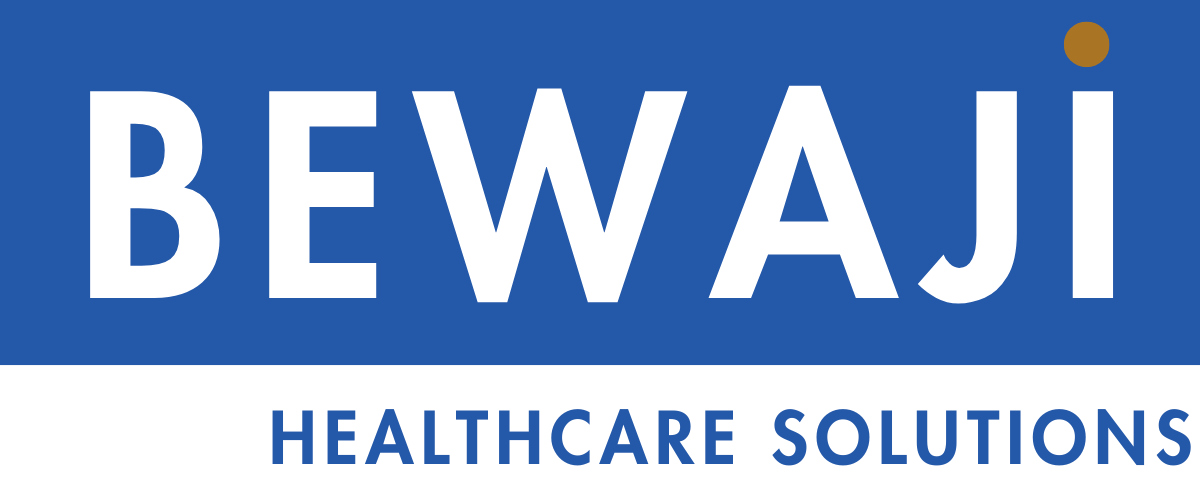Introduction
Implementing a pull system for inventory management in healthcare significantly enhances supply chain responsiveness and efficiency by aligning inventory replenishment with actual demand. This alignment minimizes waste, reduces holding costs, and ensures the timely availability of medical supplies, thus supporting continuous and high-quality patient care. This article explores the definition and benefits of the pull system, its role in minimizing waste and reducing holding costs, ensuring the timely availability of medical supplies, supporting continuous and high-quality patient care, and the steps for implementing a pull system in healthcare.
Understanding the Pull System
The pull system controls the flow of resources through a system by replacing only what has been consumed or requested. It uses signals or visual controls like Kanban cards to trigger material and information movement, synchronizing supply with actual demand. In a pull system, each workstation pulls output from the preceding station as needed rather than pushing work through the process without regard to demand. This method ensures optimal inventory levels, reducing waste and inefficiencies.
Kanban, a Japanese term meaning “signboard” or “billboard,” is one of the most popular tools used in pull systems. It involves using cards to signal when a product should be reordered or moved to the next phase in the production process. This visual signal helps streamline processes and ensures that only the necessary amount of inventory is maintained. When applied to healthcare, Kanban cards can be used to track the usage of medical supplies and trigger automatic reordering when stocks reach a certain threshold, thereby preventing shortages and overstocking.
The pull system aligns inventory replenishment with actual demand, ensuring that materials are ordered and restocked based on real-time usage. This reduces the risk of overstocking and understocking, which is crucial for maintaining an optimal supply level that matches patient needs. For example, in a hospital setting, the use of real-time data to track the usage of medical supplies ensures that restocking occurs only when necessary, thereby reducing the likelihood of shortages or excess stock that could expire.
Leveraging Technology for Real-Time Data
Patient care is dynamic and often unpredictable, making real-time data crucial for inventory management. A pull system leverages technology such as barcoding and RFID (Radio Frequency Identification) to monitor inventory levels accurately. These technologies provide real-time data on the usage and location of medical supplies, ensuring that inventory levels are constantly updated and aligned with actual demand. This minimizes the risk of stockouts, which can compromise patient care, and overstocking, leading to wastage and increased holding costs.
Minimizing Waste
Reduction of Overstocking
Implementing a pull system helps in reducing overstocking, a common issue in traditional inventory management systems. Overstocking leads to increased storage costs and wastage of expired products, which are minimized when inventory levels are based on actual usage rather than forecasts. Overstocked inventory ties up capital that could be used elsewhere and increases the risk of obsolescence, particularly in medical supplies where many items have a limited shelf life.
For instance, consider a hospital pharmacy that stocks many antibiotics based on forecasted demand. Suppose the actual usage is lower than anticipated. In that case, the excess antibiotics may expire before they can be used, leading to wastage. With a pull system, the pharmacy would reorder antibiotics based on actual usage patterns, ensuring that only the required amount is stocked at any given time. This approach reduces the risk of expired products and the associated costs, optimizing inventory levels and minimizing waste.
Elimination of Redundant Processes
The pull system eliminates redundant processes by replenishing supplies only when necessary. This reduces the waste associated with unnecessary handling and storage of excess inventory. Redundant processes often lead to inefficiencies, as resources are spent on managing and storing items that are not immediately needed. By streamlining the inventory process, healthcare facilities can focus their efforts on more critical tasks that directly impact patient care.
In traditional inventory management systems, multiple steps may be involved in ordering, receiving, and storing supplies. These steps can include manual inventory checks, paperwork for reordering, and frequent handling of supplies to make room for new stock. Each step consumes time and resources, increasing the overall inventory management cost. By implementing a pull system, these redundant processes are eliminated. For example, using Kanban cards or two-bin systems automates the reordering process, reducing the need for manual checks and paperwork. This streamlined approach reduces waste and frees up staff time to focus on patient care activities.
Reducing Holding Costs
Optimized Inventory Levels
By maintaining inventory levels aligned with actual demand, the pull system reduces the costs of holding and storing excess inventory. This optimization helps free up capital and reduce the financial burden on healthcare facilities. For instance, hospitals that implement a pull system can reduce the space required for storage, leading to cost savings on warehouse facilities and management.
Holding costs include expenses related to storing and managing inventory, such as rent for storage space, utilities, insurance, and labor costs. By optimizing inventory levels through a pull system, healthcare facilities can reduce the need for large storage areas and the associated costs. This not only improves financial efficiency but also allows for better resource allocation towards patient care and other critical operations.
Efficient Use of Storage Space
The pull system contributes to better utilization of storage space by ensuring that only necessary items are stored, reducing the need for large storage areas and the associated costs. Efficient use of storage space is particularly important in healthcare settings, where space is often at a premium. By minimizing the storage needed, facilities can allocate more space to critical areas, such as patient care units and treatment rooms.
For example, using modular storage systems that are aligned with Kanban cards allows for better organization and access to supplies, enhancing efficiency and reducing the time spent searching for items. This improved storage space utilization ensures that healthcare facilities can maximize available space for patient care and other essential functions.
Ensuring Timely Availability of Medical Supplies
Real-Time Inventory Management
The pull system enables real-time inventory management, ensuring that supplies are available when needed without delay. This is particularly important in healthcare settings where timely access to medical supplies can directly impact patient care outcomes. Real-time management allows for immediate responses to inventory needs, preventing delays that could affect patient treatment.
Real-time inventory management involves continuously monitoring and updating inventory levels using advanced technologies such as RFID, barcoding, and inventory management software. These technologies provide accurate and up-to-date information on the availability of medical supplies, allowing healthcare facilities to respond quickly to changing demands. For example, suppose a sudden increase in the usage of a particular medication is detected. In that case, the pull system can trigger an immediate reorder to prevent stockouts. This real-time responsiveness ensures that medical supplies are always available when needed, supporting uninterrupted patient care.
Prevention of Stockouts
By continuously monitoring and replenishing inventory based on actual usage, the pull system prevents stockouts that can disrupt patient care and compromise treatment effectiveness. Stockouts can have severe consequences in healthcare, where the unavailability of essential supplies can delay treatments and affect patient outcomes. Continuous monitoring ensures that inventory levels are always sufficient to meet demand.
Stockouts occur when inventory levels fall below the required amount, leading to shortages of critical medical supplies. This can result in treatment delays, compromised patient safety, and increased stress for healthcare providers. A pull system addresses this issue by maintaining inventory levels based on real-time usage data, ensuring supplies are replenished before running out. For instance, using Kanban cards or electronic inventory management systems to track usage patterns allows for timely reordering, preventing stockouts, and ensuring that healthcare providers have the necessary supplies to deliver high-quality care.
Supporting Continuous and High-Quality Patient Care
Improved Supply Chain Reliability
The pull system enhances the reliability of the supply chain by ensuring that necessary medical supplies are consistently available. This reliability supports continuous, uninterrupted patient care and contributes to higher-quality healthcare services. Reliable supply chains are essential for maintaining the high standards of care expected in healthcare facilities.
Supply chain reliability refers to the consistent and timely availability of medical supplies to meet patient care needs. In healthcare, unreliable supply chains can lead to disruptions in patient care, compromised treatment outcomes, and increased costs. A pull system improves supply chain reliability by aligning inventory replenishment with actual demand, ensuring that supplies are always available when needed. This approach reduces the risk of supply chain disruptions, supporting continuous and high-quality patient care. For example, hospitals implementing a pull system can reduce the frequency of emergency orders and stockouts, leading to more predictable and reliable supply chains.
Enhanced Patient Safety and Care Quality
Timely and accurate replenishment of medical supplies through a pull system ensures that healthcare providers have the necessary resources to deliver high-quality care, thus enhancing patient safety and overall care quality. When medical staff can rely on the consistent availability of supplies, they can focus more on patient care rather than managing inventory issues.
Adopting a Pull System for Long-Term Benefits
Implementing a pull system for inventory management in healthcare addresses immediate supply chain challenges and provides long-term benefits by enhancing efficiency, reducing costs, and supporting high-quality patient care. The long-term benefits of a pull system include improved financial performance, better resource allocation, and enhanced patient satisfaction.
A pull system offers several long-term benefits for healthcare facilities. By optimizing inventory levels and reducing waste, healthcare facilities can achieve significant cost savings and improve financial performance. Additionally, the improved efficiency and reliability of supply chains support better resource allocation, allowing healthcare providers to focus on delivering high-quality care. For example, hospitals that implement a pull system can reduce the need for emergency orders and stockouts, leading to more predictable and efficient supply chains. This, in turn, enhances patient satisfaction by ensuring that medical supplies are always available when needed, supporting continuous and high-quality patient care.
Implementing a Pull System
Assess Current Inventory Practices
Evaluate existing inventory management processes to identify areas of improvement and readiness for a pull system. Understanding the current state of inventory management helps in identifying inefficiencies and areas that require changes.
The first step in implementing a pull system is assessing current inventory management practices. This involves a thorough evaluation of the existing processes, including inventory levels, ordering patterns, storage practices, and usage patterns. By identifying inefficiencies and areas for improvement, healthcare facilities can develop a plan for transitioning to a pull system. For example, assessing the current inventory practices may reveal issues such as overstocking, stockouts, and redundant processes that can be addressed through a pull system.
Define Demand Signals
Establish clear demand signals, such as usage rates or Kanban cards, to trigger replenishment of supplies. Defining these signals accurately is crucial for the effective functioning of a pull system.
Defining demand signals is a critical step in implementing a pull system. Demand signals are the triggers that indicate when inventory should be replenished based on actual usage. These signals can be visual, such as Kanban cards, or electronic, such as inventory management software. Accurate demand signals ensure optimal inventory levels, preventing overstocking and stockouts. For example, using Kanban cards to track the usage of medical supplies allows for timely reordering, ensuring that supplies are replenished before they run out.
Train Staff
Provide comprehensive training for staff on the principles and operation of a pull system to ensure smooth implementation. Training ensures that all staff members understand their roles in the new system and can operate it effectively.
Training is essential for the successful implementation of a pull system. All staff members involved in inventory management, including ordering, receiving, and storing supplies, should receive comprehensive training on the principles and operation of a pull system. This includes training on using demand signals, such as Kanban cards, and inventory management software. Effective training ensures that staff members understand their roles and responsibilities in the new system and can operate it efficiently. For example, training sessions can include hands-on demonstrations of using Kanban cards and real-time tracking systems to monitor inventory levels.
Integrate Technology
Utilize inventory management software and real-time tracking systems to monitor supply levels and automate replenishment. Technology integration is essential for accurate tracking and timely replenishment of supplies.
Technology integration plays a crucial role in successfully implementing a pull system. Inventory management software and real-time tracking systems provide accurate and up-to-date information on inventory levels, allowing for timely and efficient replenishment of supplies. These technologies automate the reordering process, reducing the need for manual checks and paperwork. For example, inventory management software that integrates with real-time tracking systems allows healthcare facilities to monitor inventory levels continuously and trigger automatic reordering based on actual usage data. This technology-driven approach enhances the efficiency and accuracy of the pull system, ensuring that medical supplies are always available when needed.
Pilot Program
Start with a pilot program in a specific department or with a particular set of supplies to test and refine the pull system. Piloting allows testing the system on a smaller scale and making necessary adjustments before full implementation.
Implementing a pull system on a small scale through a pilot program allows healthcare facilities to test and refine the system before full implementation. A pilot program can be conducted in a specific department, such as the emergency department or the pharmacy, or with a particular set of supplies, such as medications or surgical instruments.
This approach provides valuable insights into the effectiveness of the pull system and identifies potential challenges and areas for improvement. For example, a pilot program in the emergency department can help assess the system’s ability to respond to real-time demand and prevent stockouts. Based on the pilot program results, necessary adjustments can be made to ensure the system’s success on a larger scale.
Monitor and Adjust
Continuously monitor the effectiveness of the pull system and make necessary adjustments based on feedback and performance metrics. Continuous monitoring and adjustment ensure that the system remains effective and adapts to changing demands.
Continuous monitoring and adjustment are essential for the long-term success of a pull system. Regularly reviewing performance metrics, such as inventory turnover rates, stockout occurrences, and holding costs, provides valuable insights into the system’s effectiveness. Feedback from staff members and users of the system also helps identify areas for improvement. For example, monitoring inventory turnover rates can reveal trends in usage patterns, allowing for adjustments in demand signals and reordering processes. By continuously monitoring and adjusting the pull system, healthcare facilities can ensure that it remains effective and adapts to changing demands, supporting continuous, high-quality patient care.
Conclusion
Implementing a pull system for inventory management in healthcare significantly enhances supply chain responsiveness and efficiency. By aligning inventory replenishment with actual demand, the pull system minimizes waste, reduces holding costs, and ensures the timely availability of medical supplies. This system supports continuous and high-quality patient care by improving supply chain reliability and enhancing patient safety and care quality. Healthcare facilities should adopt robust inventory management practices, including the implementation of a pull system, to improve patient care and operational efficiency.
The pull system offers several long-term benefits, including improved financial performance, better resource allocation, and enhanced patient satisfaction. Healthcare facilities can achieve significant cost savings and improve financial efficiency by optimizing inventory levels and reducing waste.
Additionally, the improved efficiency and reliability of supply chains support better resource allocation, allowing healthcare providers to focus on delivering high-quality care. Implementing a pull system requires a comprehensive approach, including assessing current inventory practices, defining demand signals, training staff, integrating technology, piloting the system, and continuously monitoring and adjusting its performance.
In conclusion, the pull system is a powerful tool for enhancing inventory management in healthcare. Its ability to align inventory replenishment with actual demand ensures that medical supplies are always available when needed, supporting continuous and high-quality patient care.


